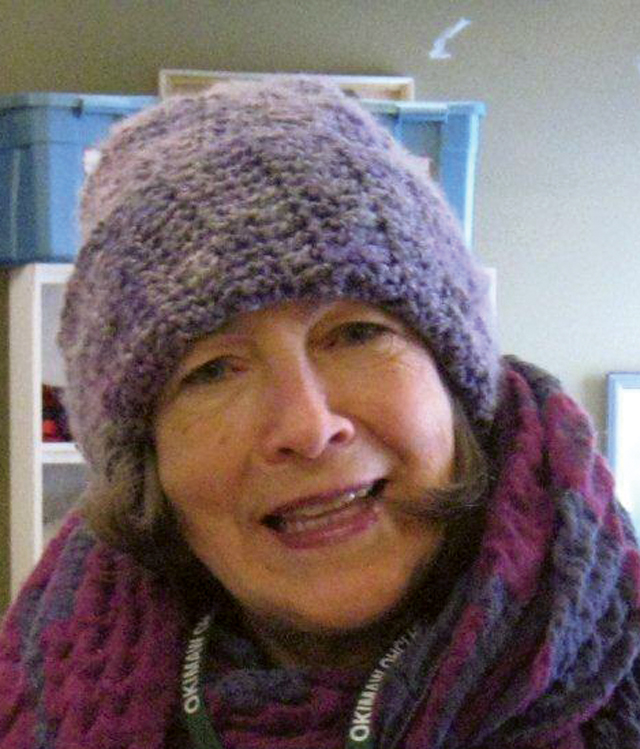Hope through art
By May Sanderson
May/June 2013
Return to Table of Contents
Print Article
The young woman in her 20s was serving time for manslaughter, her second federal offence. As a baby she had been abandoned by her mother and had been in and out of foster homes throughout her childhood and adolescence; she had witnessed the murder of her grandmother; her only child had been taken away from her and her partner had left her. What could I possibly do to give this woman some reason to live?
As an Art Therapist I carry with me to this medium security federal penitentiary a life-giving force that has the power to bring hope. Whether it is dancing, singing, playing a musical instrument, or painting—any creative act taps into the soul, makes the artist realize her Spirit’s uniqueness and reminds her who she really is. For me, witnessing that creative spark is like finding a single hot red coal in a pile of cold ashes. I blow on it and fan it with my hand and suddenly it explodes into flame.
A spider’s web is
always being broken,
she explained,
but the spider never
gives up trying to fix it.
That moment of truth is a wonderful shared experience for both the woman and for me. My job then is to protect and nurture that delicate, fragile flame—feed it with affirmation and encouragement until it becomes a strong fire. Then gradually but miraculously, the woman begins to think better of herself: Perhaps I am more than a wife who got drunk and stabbed my husband to death. Maybe I am more than a woman who sold illegal drugs to support my habit. Her art gives her perspective from the pain of the past and allows her to see her life in a new light. She begins to dream of new possibilities and to use the art to depict things she cannot articulate.
Although she had never used art materials, the young woman before me instinctively understood the symbolism of art. In each of the paintings she did in our art therapy sessions, she placed a spider. A spider’s web is always being broken, she explained, but the spider never gives up trying to fix it.
As Thomas Berry reminds us, it’s all a matter of story—not only the big story of the unfolding of the universe, but the unfolding of our own individual stories: our past, our ancestors, our culture, our land. The stories of the women I work with in this remote penitentiary are stories of alcohol, abuse, violence, and poverty. Through art they begin to see a larger story and to understand that they can write a new story that is their very own.
Mary Sanderson’s work at The Okimaw Ohci Healing Lodge in Maple Creek, Saskatchewan, is made possible through generous grants by The Basilian Fathers Human Development Fund and The Donner Foundation of Canada.
Return to Table of Contents
Print Article
